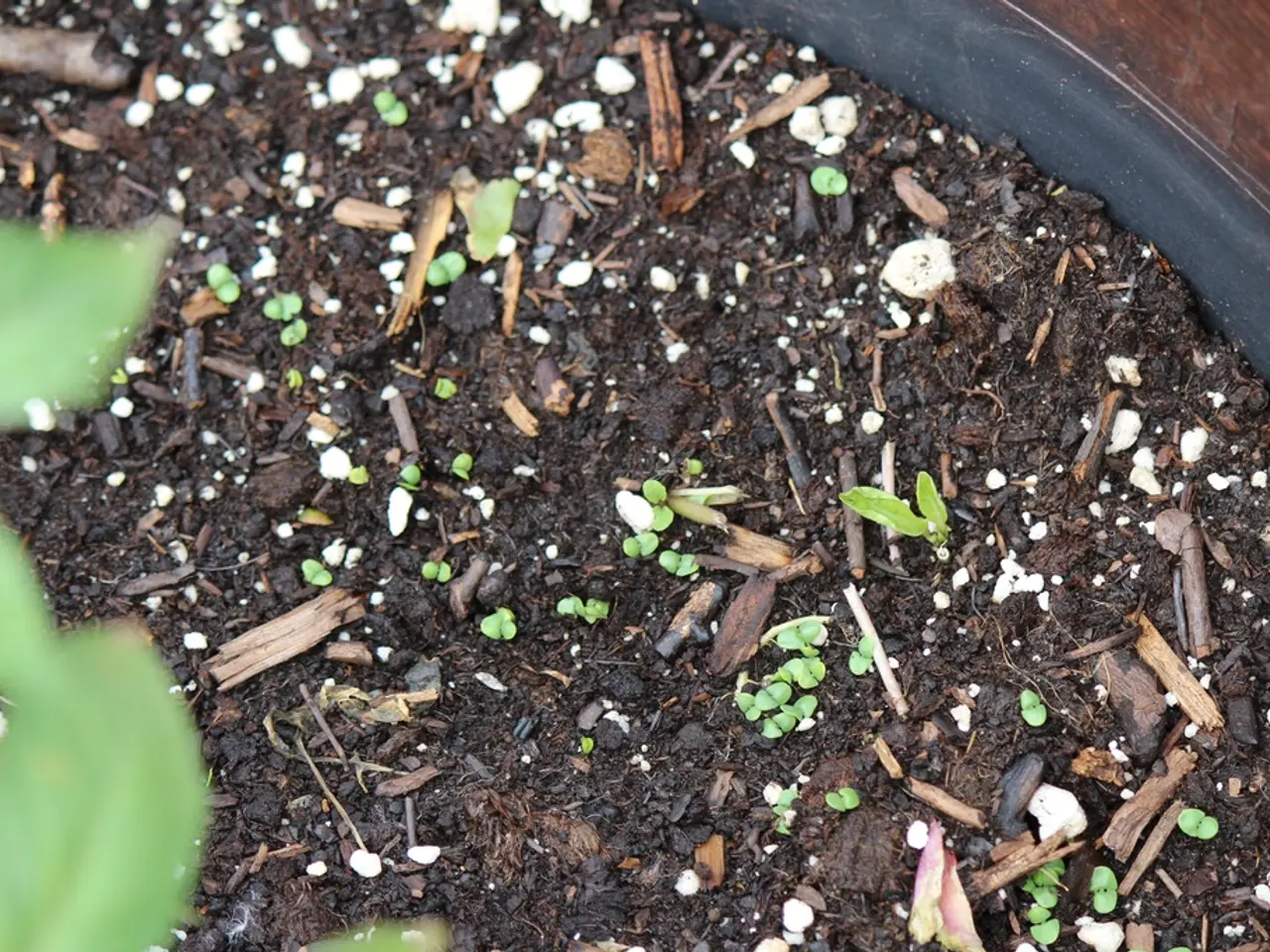Enhancing Garden Soil Aeration Through Practical Methods
In the quest for a thriving garden, one essential aspect often overlooked is soil health. By employing manual soil aeration methods, backyard gardeners can effectively tackle compacted soil, promoting a lively ecosystem and enhancing the growth of plants.
Manual Soil Aeration Methods
A variety of tools can be used to loosen compacted soil, each with its unique advantages. The garden fork, manual core aerator, broad fork, shovel, and rototiller are all integral to the process.
The garden fork, with its tines, is ideal for small areas and delicate plants, loosening compacted soil with minimal effort. Take care not to over-till, as this can worsen compaction.
The manual core aerator, on the other hand, removes small plugs of soil more effectively than spike aerators, reducing compaction significantly.
A broad fork, similar to a garden fork but wider, loosens soil deeply without turning it over, making it perfect for larger garden beds.
A shovel or rototiller can be used to break up large compacted areas, digging or tilling the surface soil. After loosening, it's beneficial to mix in compost or organic matter and cover with topsoil to improve fertility and structure.
Spike aerator tools or aerator shoes create holes by pushing spikes into the soil, but are generally less effective than core aerators for severe compaction.
Benefits of Manual Soil Aeration
Aeration offers numerous benefits for garden soil health. Improved air and water penetration allows oxygen and moisture to reach plant roots more efficiently, essential for healthy growth. Enhanced nutrient uptake results from a looser soil structure, while stronger root systems thrive due to better airflow and water infiltration.
Aeration also reduces soil compaction, preventing issues related to foot traffic or heavy rains that compact soil, hindering lawn and garden health. Furthermore, aerated soil enables better seed-to-soil contact, improving germination rates, making it easier to over-seed or top dress.
Recommended Tools for Backyard Gardening
When choosing tools, consider the size of your garden and the level of compaction. For small areas, delicate plants, and beds, a garden fork is a suitable choice. For small to medium lawns with localized compaction, a manual core aerator is recommended. For larger garden beds and deeper aeration, a broad fork may be more appropriate. A shovel or rototiller can be used for breaking up very compacted soil. For light compaction and quick fixes, aerator shoes or spike aerator tools can be useful.
Additional Recommendations
Timing is crucial when aerating. Aim for soil that is moist but not waterlogged for easier penetration. After aeration, follow up with adding compost or organic mulching to improve soil fertility and structure. Consider overseeding after aeration to help new grass establish. Lastly, timing aeration with your plant growth cycle or lawn type optimizes results.
By incorporating these manual methods into your gardening routine, you'll be on your way to a healthier, more vibrant garden. Aeration is an affordable, environmentally friendly way to improve soil health and plant vigor without the need for heavy machinery. Happy gardening!
Sources: 1. Gardening Know How (2025). Manual Soil Aeration: A Comprehensive Guide 2. The Spruce (2025). How to Aerate Soil: 12 Easy Steps 3. Better Homes & Gardens (2025). Soil Aeration: How to Aerate Soil for a Healthier Garden 4. HGTV Gardens (2025). Soil Aeration: How to Aerate Soil for a Healthier Garden
The choice of tools for enriching the home-and-garden lifestyle, particularly focusing on gardening, is crucial. A variety of manual soil aeration tools can help tackle compacted soil, such as the garden fork, manual core aerator, broad fork, shovel, and rototiller.
These manual methods employed in backyard gardening foster a lively ecosystem, leading to a lifestyle that enhances the growth of plants and promotes soil health, a vital aspect often overlooked in the quest for a thriving garden.




